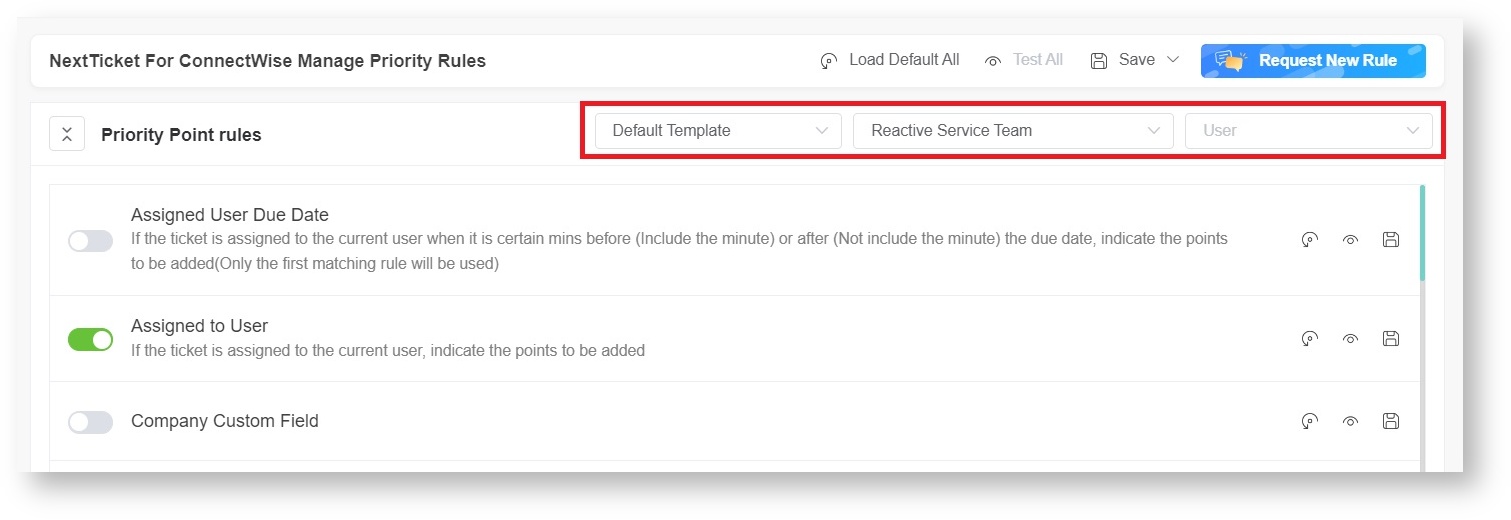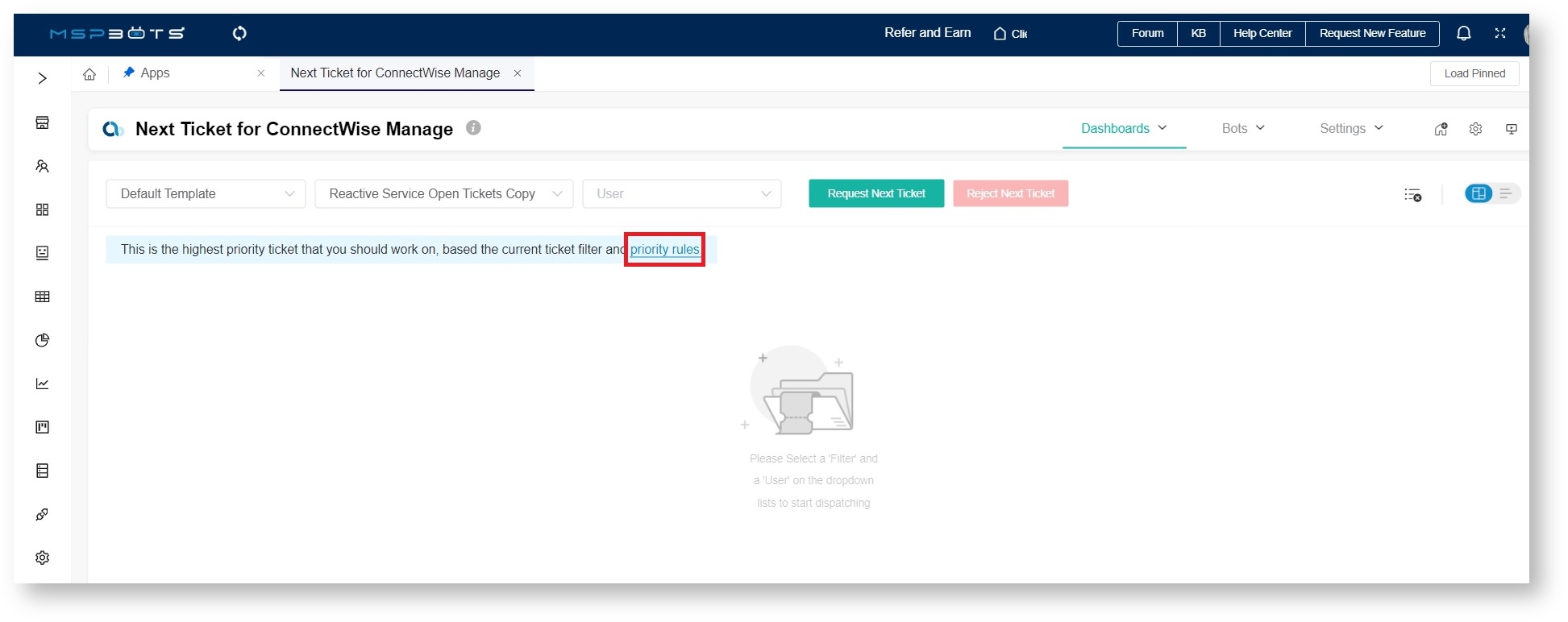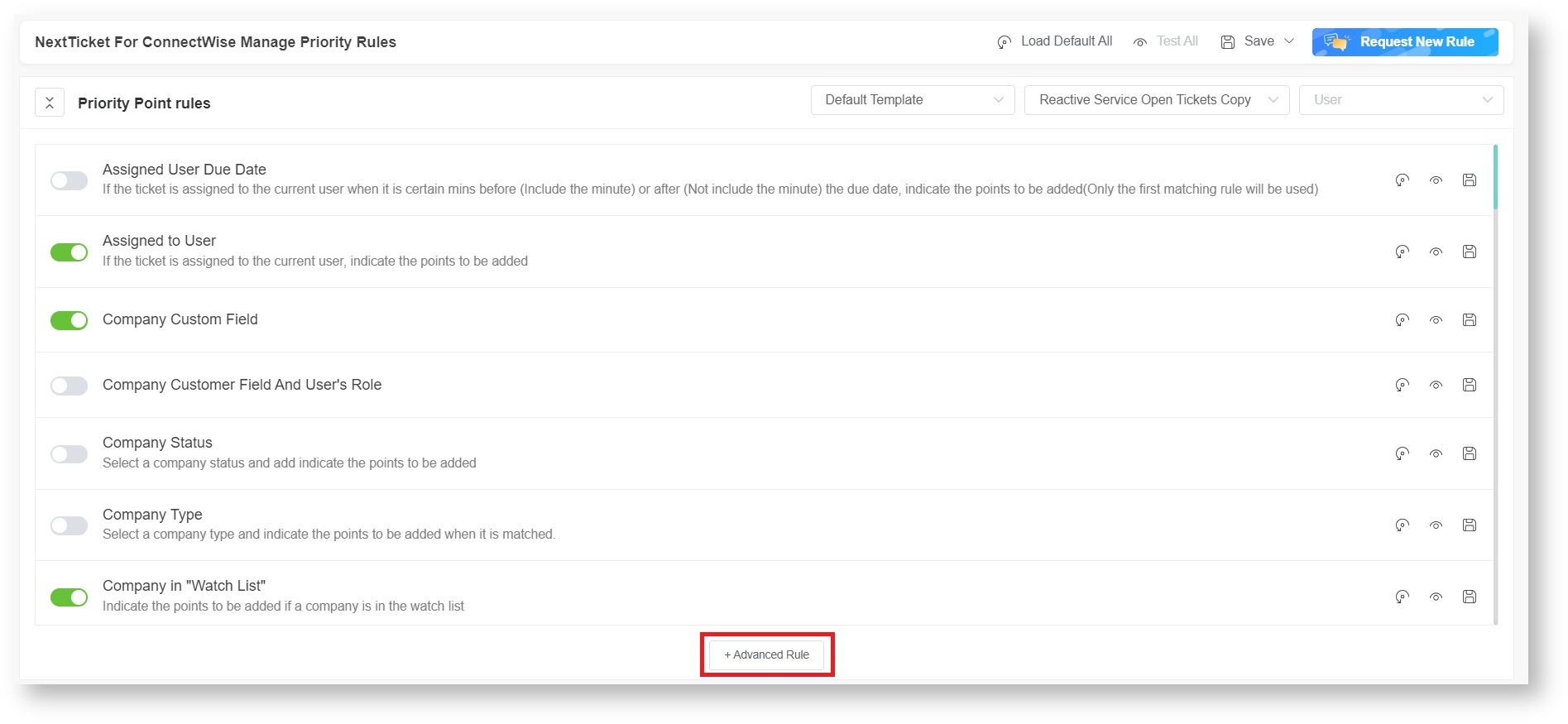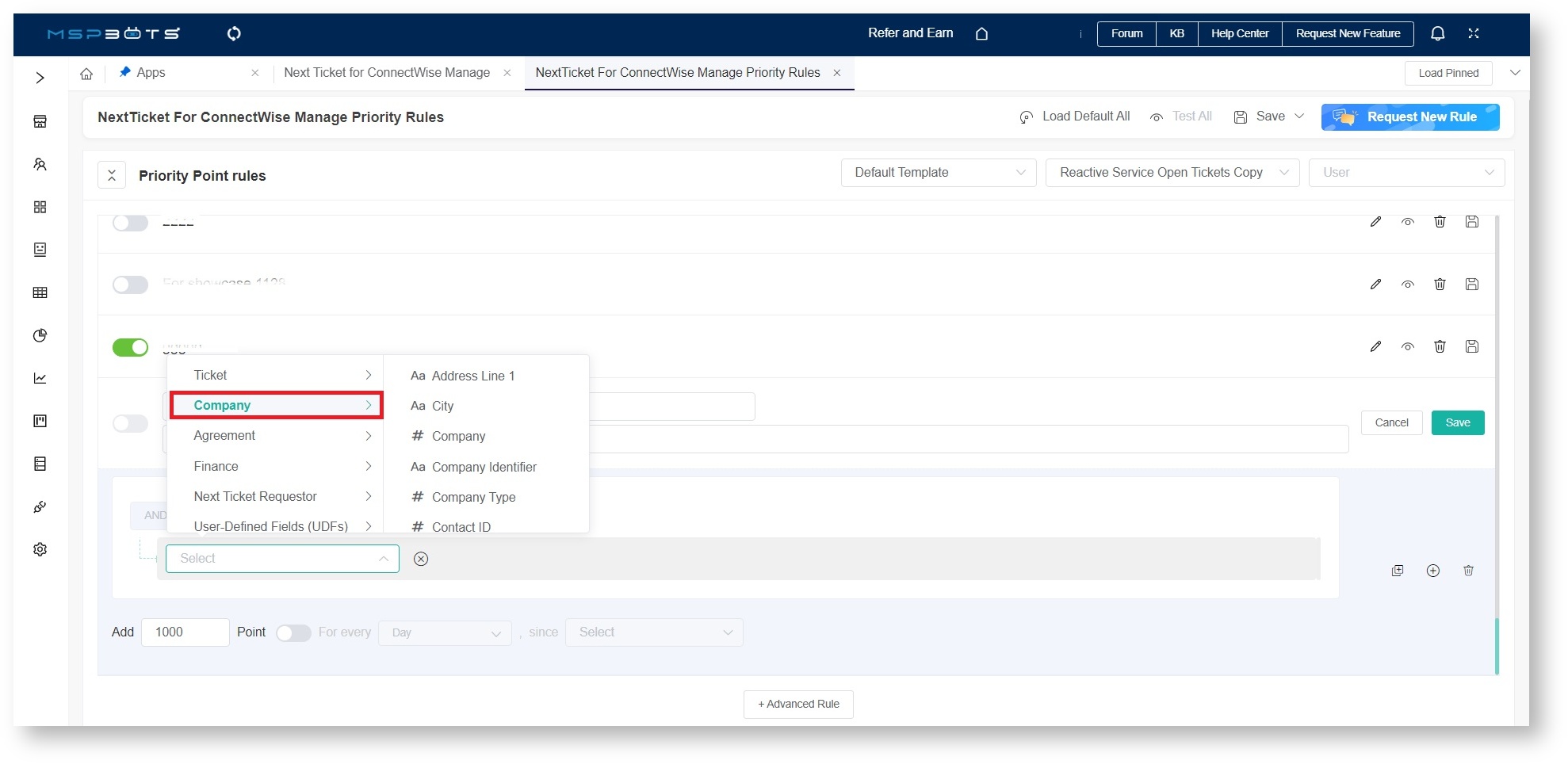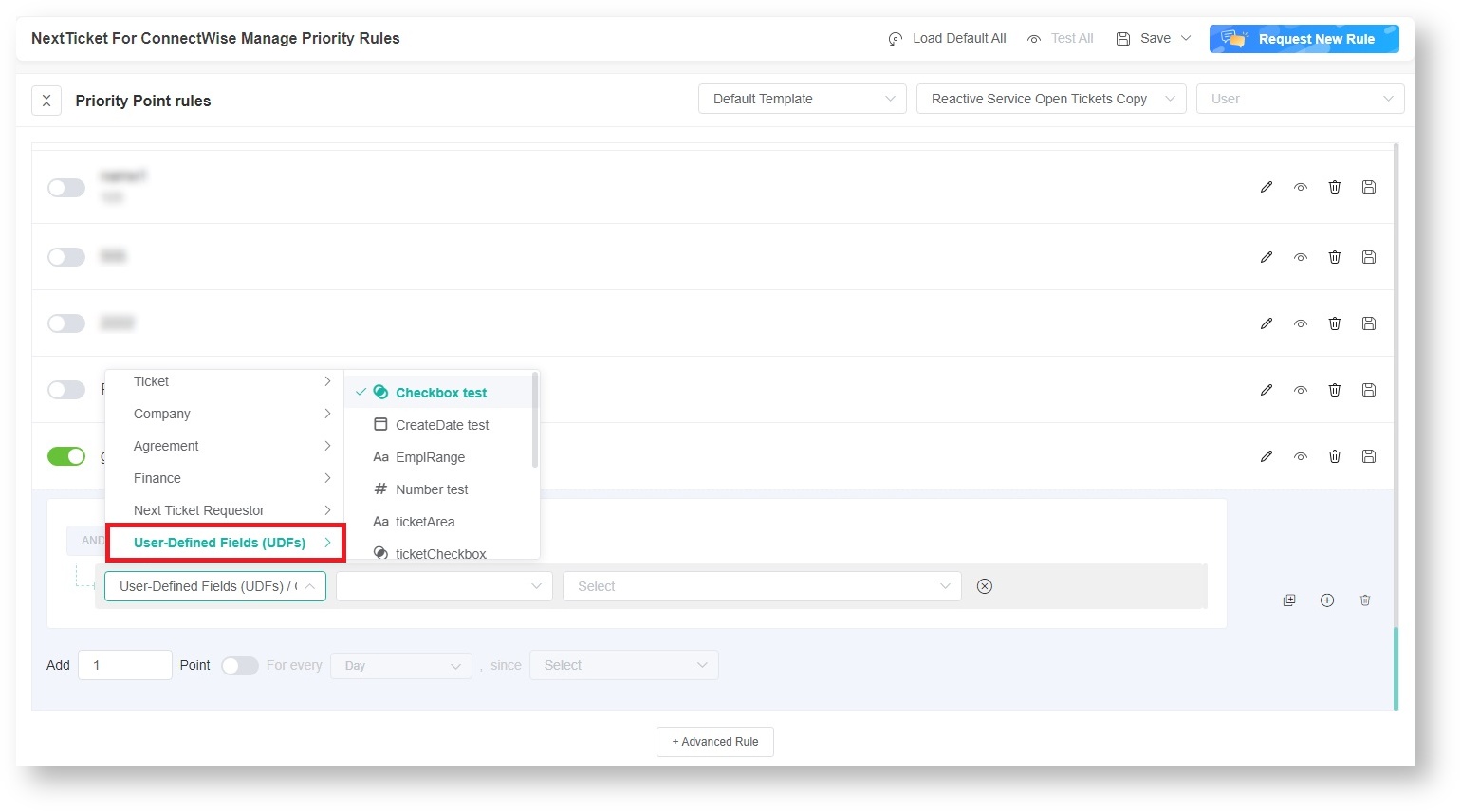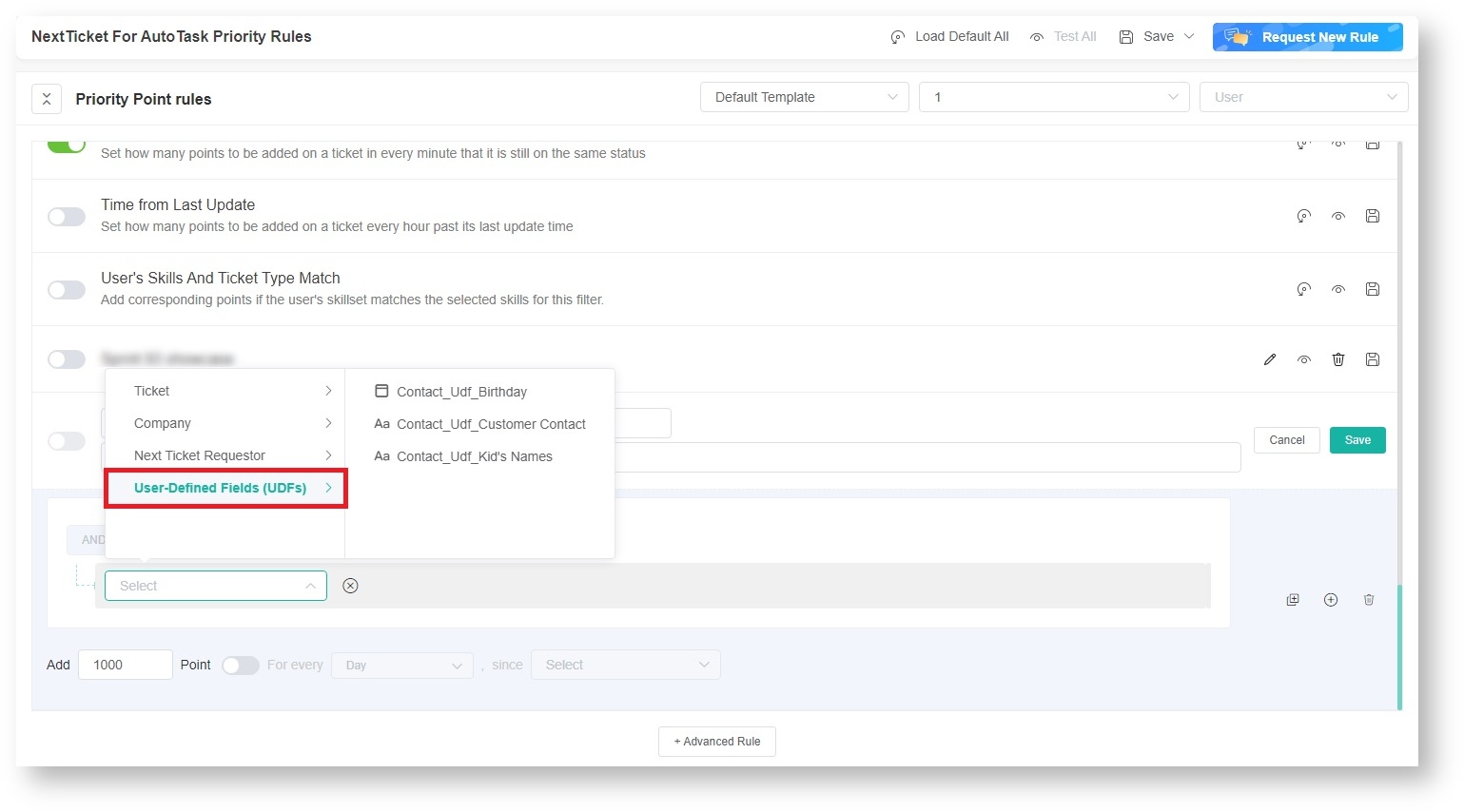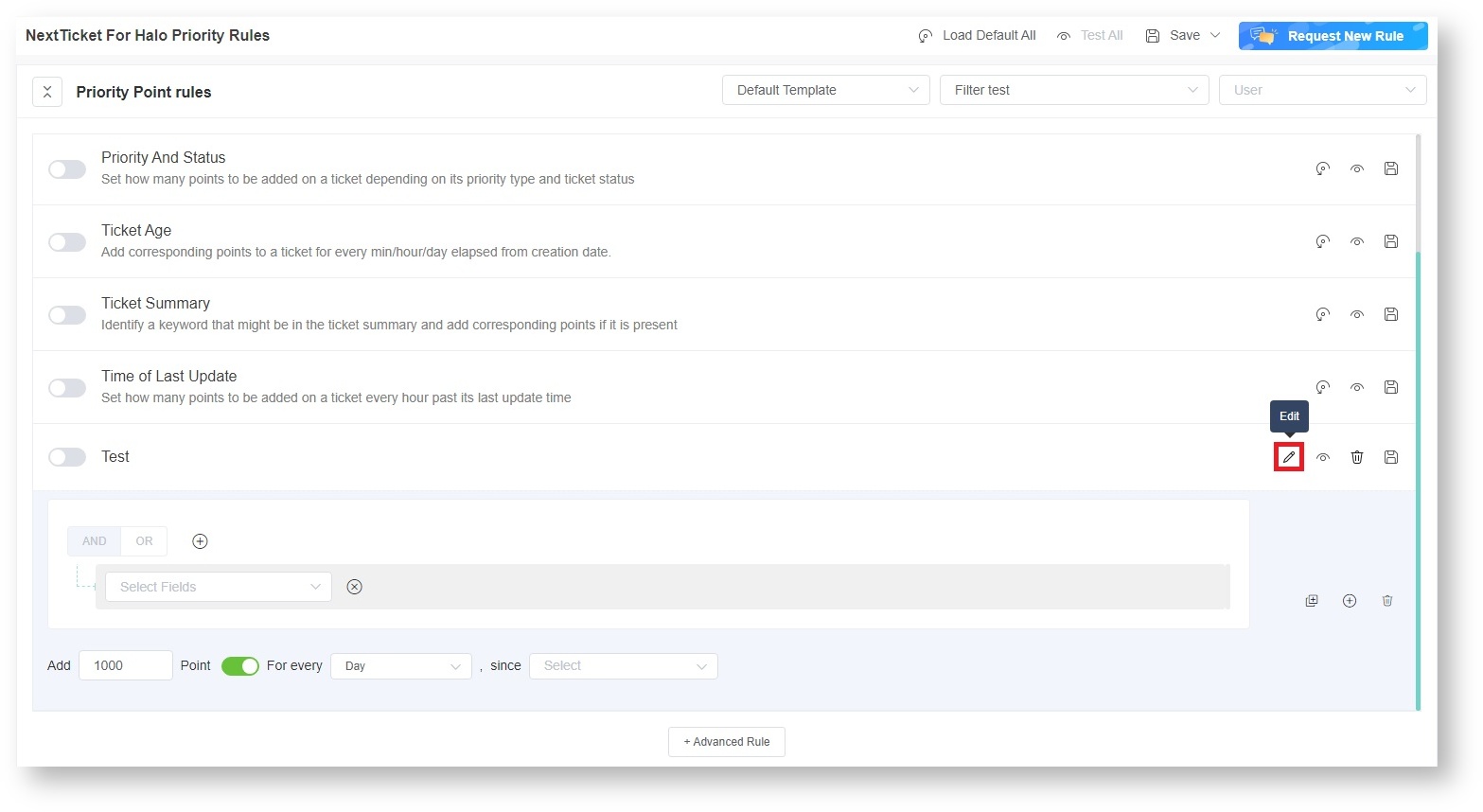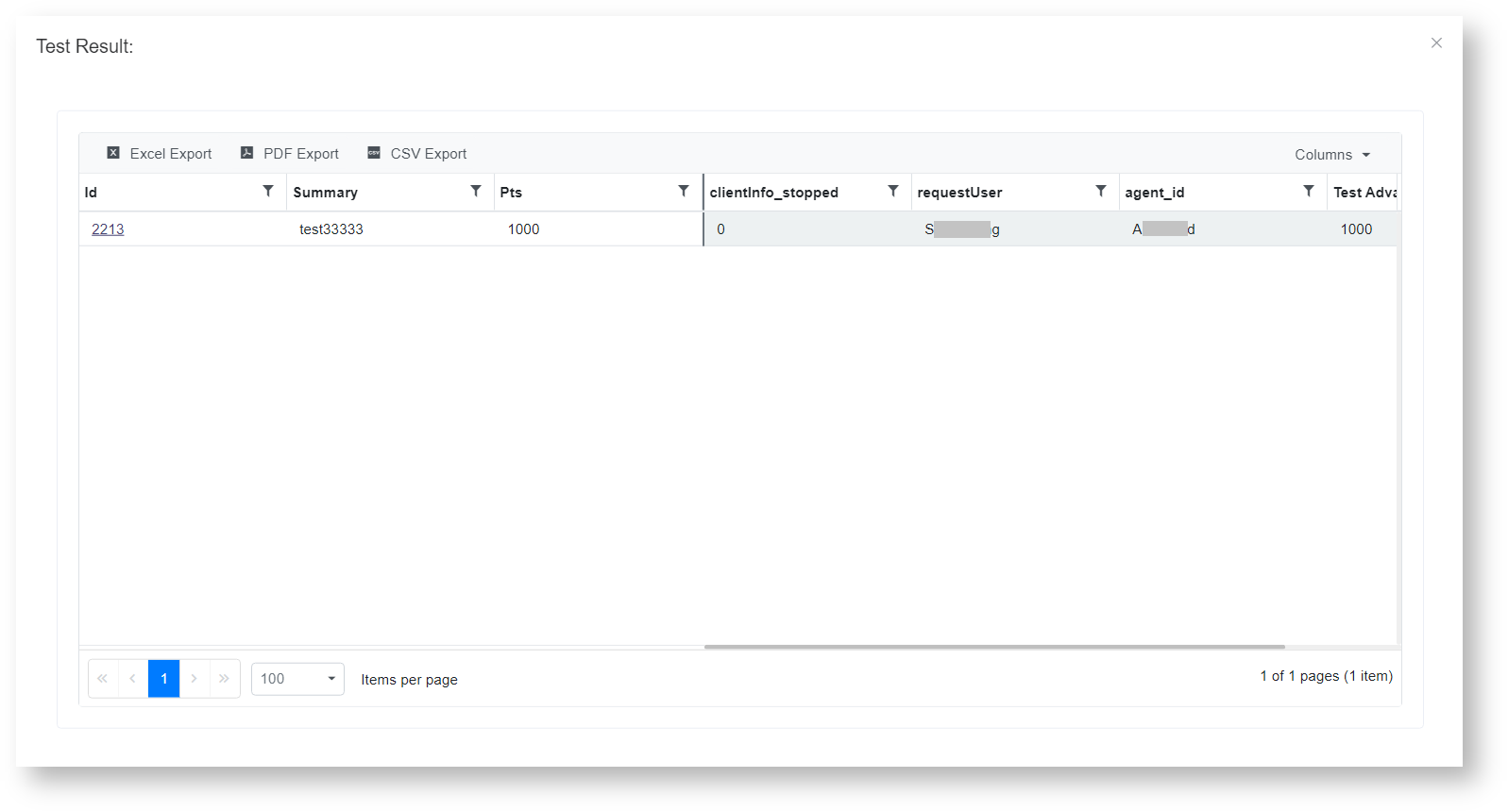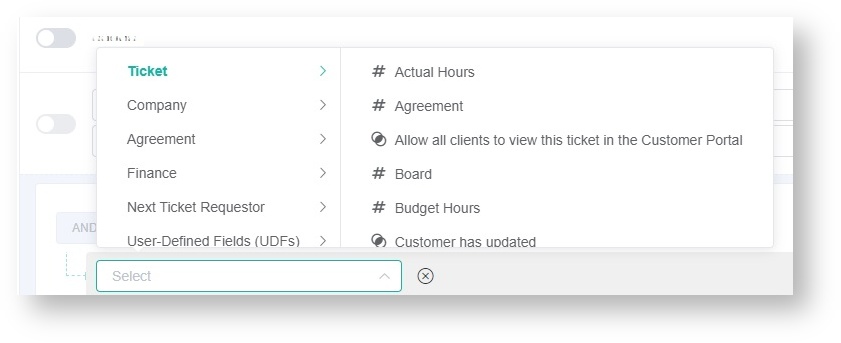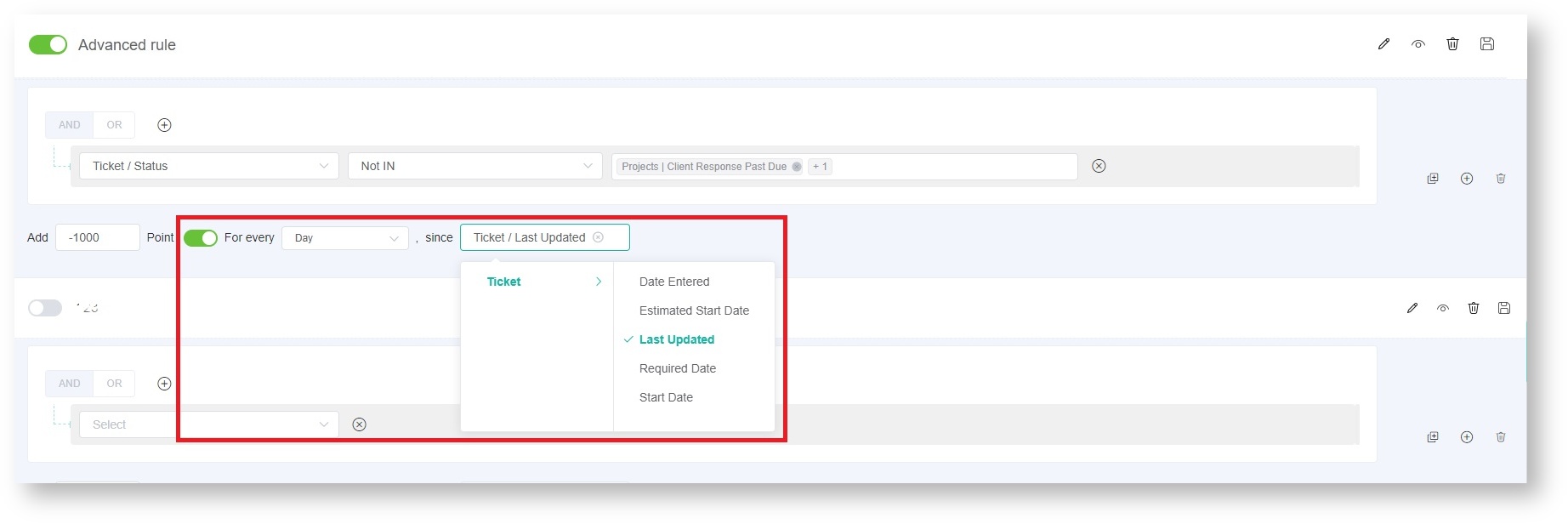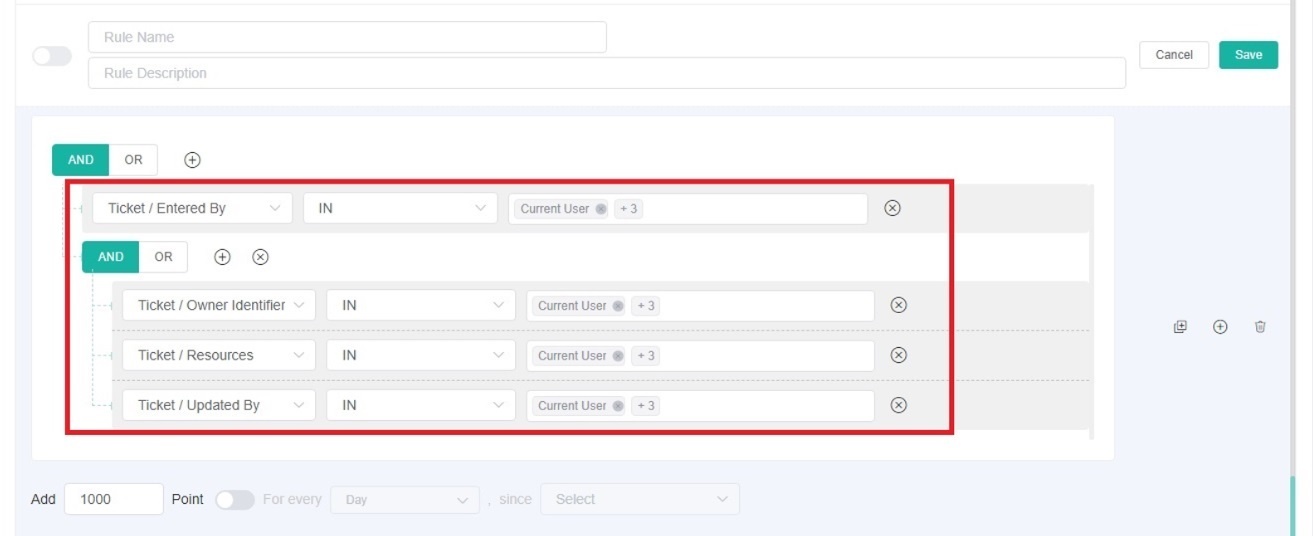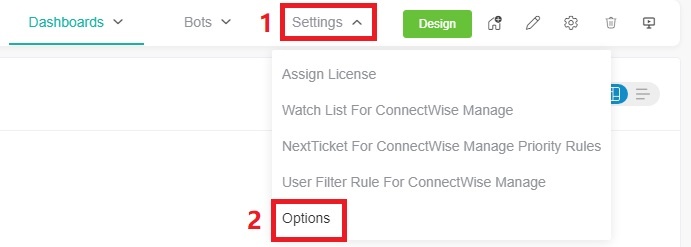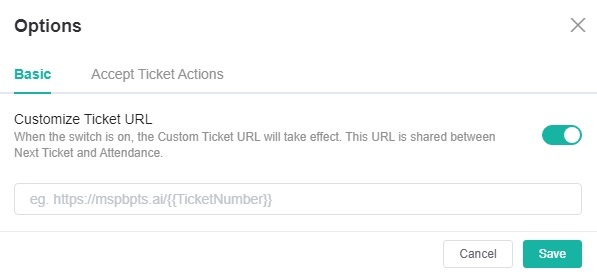 N O T I C E
N O T I C E 
MSPbots WIKI is moving to a new home at support.mspbots.ai![]() to give you the best experience in browsing our Knowledge Base resources and addressing your concerns. Click here
to give you the best experience in browsing our Knowledge Base resources and addressing your concerns. Click here![]() for more info!
for more info!
 N O T I C E
N O T I C E 
MSPbots WIKI is moving to a new home at support.mspbots.ai![]() to give you the best experience in browsing our Knowledge Base resources and addressing your concerns. Click here
to give you the best experience in browsing our Knowledge Base resources and addressing your concerns. Click here![]() for more info!
for more info!
The NextTicket app is an automated ticket dispatch system that gives the technicians and dispatchers a portal where they can identify the next ticket that will be worked on. The dispatching is based on a scoring system identified by the organization considering predefined rules that will help deliver value to the MSP faster.
What's on this page:
App Link
https://app.mspbots.ai/dashboard-1357516578732232706?pageid=1357516578732232706
How to access the app
To access the NextTicket app for ConnectWise in MSPbots, follow these steps:
1. Go to app.mspbots.ai
2. Click Apps in the left pane.
3. When the Apps tab opens, click NextTicket for ConnectWise Manage.
Why should you care?
- For Owner and Service Managers: The NextTicket app is going to provide an automated way of dispatching tickets to technicians. It also helps ensure that technicians and dispatchers are more objective in catering tickets based on their priority, importance, and time criticality.
- For Dispatchers: This feature gives dispatchers an automated way of dispatching tickets in a few clicks. And you also have a way to see the highest ticket priority for each technician considering their skillset.
- For Technicians: This feature helps technicians easily identify what ticket they should work on next. If technicians can't work on the ticket, they can reject it as long as they specify the reason. Technicians can also monitor their scheduled tickets for the day on the same page.
Prerequisites
- ConnectWise Manage Integration
- Set Up Priority Rules (only Admin users can modify these on the Settings tab).
- Optional: Add Companies to the Watch List.
Admin Users: Setup Procedures
Only Admin users have permission to adjust the settings for the NextTicket app.
Set the ticket filter
You can set filters that can help you narrow down the tickets applicable to each technician.
To set the ticket filter, follow these steps:
1. On the NextTicket for ConnectWise screen, select the Tickets filter list, and then click Add New Filter.
2. When the Filter Settings window opens, enter the name of the filter in the Filter Name box.
3. In the center pane, select the applicable filter type from the Select Fields list.
4. When two new boxes or lists appear beside the Select Fields list, indicate the other specifications of the filter.
If you want to add more groups or conditions for the filter, click the plus symbol below Filter Name, and then select either Add Group or Add Condition.
You can also click Preview to check if your new filter settings or conditions are valid before you save the changes.
5. When you're done setting up the filter, click Save.
Delete filter conditions
In the Filter Settings window, you can either delete filter conditions individually or delete them all at once.
To delete filter conditions individually, click the icon corresponding to the condition that you want to delete.
To delete all filter conditions at once, click theicon, and then click Clear All.
Reject the top-priority ticket of a user
On the NextTicket for ConnectWise screen, after you select a filter and a user, the Request Next Ticket option automatically refreshes, and then the details of the user's top priority ticket appear on the screen. If you think that the ticket should not be the top priority ticket of the user, you can reject the ticket. It is also necessary to specify the reason why the user can't work on the ticket.
To reject the top priority ticket of a user, follow these steps:
1. On the NextTicket for ConnectWise screen, select the applicable filter from the Tickets filter list.
2. From the User list, select the applicable user to see his or her top priority ticket.
3. Once the details of the user's top priority ticket appear on the screen, review the details, and then click Reject Next Ticket.
4. When the Reject Reason window opens, select or type the reason why you want to reject the ticket, and then click Save.
Set up the point system for priority rules
Note: The procedure below applies to ConnectWise Manage users.
How to set up the point system
- In the NextTicket for ConnectWise Manager, click Settings > NextTicket for ConnectWise Manager Priority Rules.
- Select the applicable options in the Tickets filter and User lists.
- Set up the priority rules. You can refer to the priority rules section and functions below for reference. By default, the rows of priority rules are expanded. You can click the Priority Point rules switch to collapse all rows.
- After setting up each priority rule, you can do any of the following:
- Click Load Default to load the default value for the rule.
- Click Save Default to save the new priority rule value as the default value.
- Click Save & Test to save the changes for the specific priority rule and to test the rule values.
- Click Save to save the changes for the specific priority rule.
- After setting up all your preferred priority rules, do any of the following:
- Click Test All to test the calculation result for all the priority rules.
- Click Load Default All to load the default values for all the priority rules.
- Click Save All to save the changes for all the priority rules.
Best Practices in setting up the priority points
- Interview your dispatcher or technician to identify rules and conditions like this: If (given scenario), then it should be given more (or less) importance.
- Review each of the point rules you have identified. Use the Save & Test function to test each rule.
- Use the Test all function to balance the points between the rules and check if the prioritization brings up your expected result.
- Ask your technicians to give the app a try and give you feedback.
- Adjust the rules and points based on the dispatcher's or technicians' feedback.
- Continue updating the rules and corresponding priority points for two weeks. The resulting prioritization should improve over time and you won't need to modify anymore.
- Request and create new rules that are not similar or duplicates of existing ones.
What are the NextTicket priority rules and functions?
Below are the priority rules and descriptions of how each rule functions.
Priority Rule | Function |
|---|---|
| Assigned to User | Indicate the points to be added to a ticket if it is assigned to the selected user. |
| Company Status | Select the status of a company from where the ticket was logged, and then indicate the corresponding points to be added to a ticket if the criterion is met. This is where you can avoid catering tickets from companies that have a negative tagging in your organization like Credit Hold or Delinquent. You can also boost tickets from companies who are in 'Platinum', 'Needs Attention', or 'May Leave' status. |
| Company Type | Select a company type of a company from where the ticket was logged, and then indicate the corresponding points to be added to a ticket if the criterion is met. |
| Company in "Watch List" | Indicate the points to be added to a ticket if a company is on the watch list. |
| Company is Matched to User | Select a company from where the ticket was logged, and then select the technician requested to handle the ticket. Lastly, indicate the corresponding points to be added to a ticket if the criteria are met. Some of your users may prefer handling tickets from specific clients for several reasons like familiarity with work items. On the other hand, some users may want to avoid specific companies due to possible conflict or a severed relationship state. |
| Contact's Job Title | Select the job title of the person who logged the ticket, then indicate the corresponding points for the criteria. |
Customer Responded | Indicate the points to be added to a ticket if the customer responds to the ticket in ConnectWise. |
| In Progress Ticket | Indicate the points to be deducted from the ticket if it is in progress for other users or points to be added to the ticket if the user changed the ticket status to In Progress. If somebody else is already working on a ticket, dispatching it to another user might cause an overlap. But when a ticket has been in progress for too long that the original user assigned to it may have forgotten to continue working on it, 'Time In Certain Status ' and 'Time from Last Update' priority rules can be adjusted to ensure these tickets won't be buried in the pool. |
| MRR | Indicate the points to be added to a ticket for every $1 of agreement MRR. This will help you prioritize the companies that have more revenue for your organization. |
| Past Due Date | Indicate the points to be added to a ticket for every hour past its due date. |
| Priority Type | Indicate the points to be added to a ticket based on a specific priority level. |
| Scheduled Status | Select a scheduled status, and then indicate the corresponding points within the minimum and maximum time set before or after its start or end time. This priority rule will help you manage scheduled tickets to avoid scenarios where users pick up tickets that are scheduled for others before the schedule starts or the user forgetting to work on tickets that are scheduled for them right after the schedule begins. |
| Selected Assigned | Indicate the points to be added to a ticket based on a specific status and requested user. |
| Ticket Owner | Indicate the points to be added to a ticket if the selected user is the owner of the ticket. |
| Ticket Status Duration | Indicate the points to be added to a ticket for every hour that it remains in the same status. |
| Ticket Summary | Indicate the points to be added to a ticket if the ticket summary contains the specified keywords. You can capture blockers that prevent your clients from continuing their operations easily or sort tickets based on specific topics which may be assigned to technicians with great expertise in those areas. |
| Time In Certain Status | Indicate the points to be added to a ticket if it has been in the specified status for more than or less than the specified duration. |
| Time from Last Update | Indicate the points to be added to a ticket for every hour past the time that it was last updated. |
| User's skills and ticket type match | Indicate the points to be added to a ticket if the selected user possesses the skill specified in the priority rule. |
| Ticket Age Custom Field | Select a custom field and add corresponding points to each working day, day, hour, or minute when the field is before, equal to, after, or not equal to a specific date relative to the work order creation date. By adding exceptions and increasing the points for aged work orders, you can ensure that these orders are handled in a timely manner. However, for work orders with specific characteristics that may result in aging, you can choose to assign them to users within a specified time frame to expedite processing. This way, you can effectively track and manage aged work orders, ensuring their timely resolution and avoiding backlogs and delays. |
| Ticket Custom Field | Select a custom field and add points when the field meets specific conditions and the requested user is or is not a specific individual. This priority rule will help you create custom work order management rules that add points to these orders when certain conditions you define are met. This allows you to categorize and prioritize work orders based on specific conditions, better organizing and managing the work order queue. |
Add an advanced rule
What's on this page:
Background Information
The Advanced Rule feature enables the creation of custom rules when the pre-set priority rules do not meet business requirements. Use this feature when want to create and add a new priority rule on your own.
Prerequisites
This feature is available to NextTicket Manager for integrations with ConnectWise Manage, Autotask, or Halo integration. Only users with the admin role can create advanced rules.
How to Add an Advanced Rule
- Launch NextTicket and c;ick the priority rules link on the NextTicket screen.
- Click the Advanced Rule button below the rules list to open the Advanced Rule pop-up window.
- Fill in the following fields for adding an advanced rule:
- Rule Name - Enter a unique rule name.
- Rule Description - Enter a description for the rule. (Optional)
- Rule - Create conditions for the advanced rule. Add more groups or conditions if you need to.
Creating Advanced Rule conditions for the NextTicket Manager for ConnectWise Manage
When configuring advanced rules, you can select Company as a condition and select a filter from the options that appear. Using the Company condition allows you to adjust ticket prioritization by adding or subtracting ticket points based on different company types.
The User-Defined Fields (UDFs) feature provides more flexibility when configuring advanced rules by giving the option to select from pre-configured custom fields. Modifications to these custom fields in the ConnectWise are synchronized every hour with MSPbots and automatically reflected in the condition field list of the advanced rules.
Creating Advanced Rule conditions for the NextTicket Manager for AutoTask
You can also select pre-configured custom fields in the User-Defined Fields (UDFs) feature like custom fields from the contact modules. Modifications to custom fields in the AutoTask UDF feature are synchronized with MSPbots every five hours and automatically reflected in the condition field list of the advanced rules.
- If you want to duplicate a specific condition within the new advanced rule, click the Clone icon. This will copy the corresponding condition and its associated score, placing it as a new condition under the existing rule. You can then modify the value and score of this new condition as needed. This simplifies the process of setting up similar conditions.
To add an empty condition, click the Add icon and then configure the condition as needed.
To delete the condition, click the Delete icon. - Click Save to keep the settings.
- Select the toggle switch for the new advanced rule to enable (or disable) it.
How to Configure an Existing Advanced Rule
Follow this guide if you want to configure an existing advanced rule:
- Click the Edit icon to change the name and description of the rule.
- Click to save the priority rule and test the values of the rule. Below is an example of the Test Result window.
Click the Deleteicon if you want to delete the advanced rule,
Don't forget to click the Saveicon to save your configuration.
If using this feature does not meet your new rule requirement, file a new feature request or email support@mspbots.ai for assistance.
What other fields are available in the Advanced Rule?
| No. | Field Name | Description |
|---|---|---|
| 1 | Cascading options for the dropdown fields | The options in the dropdown fields are arranged into categories Ticket, Company, Agreement, Finance, Next Ticket Requestor, and User-Defined Fields (UDFs) for easier browsing and selection of filters. Users can select a category and then select an option under that category. The category field also allows searching for a filter. |
| 2 | Support for positive and negative points | The Advanced Rule feature supports positive and negative points. Enter a whole number or a negative value in the Add field to increase or decrease a ticket's priority. |
| 3 | Assign points based on time intervals | If you want to ensure prompt handling of tickets that meet advanced priority rules, you can activate the For every switch that allows you to assign points based on time intervals. This helps improve the efficiency of ticket processing and prevents tickets that have not been worked on from aging due to attribute reasons. You can configure the conditions for scoring based on time intervals to ensure that tickets are prioritized appropriately.
|
| 4 | Less prioritization for tickets with a start date set in the future | The Advanced Rule has the new field Start Date field which enables you to add negative points to tickets with a start date set in the future. You can select or search for an option in this field. |
| 5 | Time variable | You can give priority to tickets that fall under the selected specific times. For example, select tickets that start in the Next 24 hours. |
| 6 | Assignee's Attendance Status variable | Previously available in NextTicket for Autotask only, the Assignee's Attendance Status variable is now also included in the advanced rule filters for NextTicket for ConnectWise Manage and NextTicket for Halo. This variable factors the assignee's attendance status into ticket prioritization. |
| 7 | Only available in the advanced rules of NextTicket for ConnectWise Manage. This conditional field already exists in the preset priority rules. You can find it under the Company category. | |
| 8 | Current User | Only available in the advanced rules of NextTicket for ConnectWise Manage. If you choose any of the following conditions under the Ticket category: Resources/Owner Identifier/Updated By/Entered By, you can select Current User as an option and also choose multiple users. |
| 9 | Company Team Role |
|
| 10 | Top Level |
|
Related Topics
Add companies to the Watch List
By adding companies to your watch list, you can give additional points to the tickets that they log so you can bump the priority of their tickets.
To add companies to the watch list, follow these steps:
1. On the NextTicket for ConnectWise screen, click Watch List.
2. When the Watch List tab opens, click Add Company.
3. In the Add Company window, select the checkbox for the applicable companies.
You can also select the Only show companies have agreement check box if you want only the companies with agreements to appear on the list of companies.
4. In the Why add to the watch list? box, enter the reason why you want to add the selected companies to the watch list.
5. Once finished, click Save.
Customize Ticket URL
- Go to Next Ticket for ConnectWise Manage app.
- Click Settings> Options.
- When the Options tab appears, toggle the Customize Ticket URL switch and enter your custom ticket URL, replacing the actual ticket number with the {{TicketNumber}} token.
- For example, if the original ticket URL is https://manage.mspbotssample.com/v4_6_release/ConnectWise.aspx?locale=en_US&routeTo=ServiceFV&recid=5027470, and you want to customize the ticket URL to https://mtx.link/5027470, you need to enter https://mtx.link/{{TicketNumber}} in the "Customize Ticket URL" option. So, when you click on the ticket number, the link will point to https://mtx.link/5027470.
The "Customize Ticket URL" feature is universal in the Attendance Manage and all NextTicket apps:
- If you toggle on the "Customize Ticket URL" switch in any one of the attendance management or all the NextTicket apps, the switch for this feature in the remaining apps will also be turned on. If you turn off the switch in any of these apps, the switch for this feature in the remaining apps will also be turned off.
- When you configured the "Customize Ticket URL" in any of these apps, it will be applied to all the remaining apps.
- If the "Customize Ticket URL" switch is turned off, the ticket links will remain as the originally generated links.
- For example, if the original ticket URL is https://manage.mspbotssample.com/v4_6_release/ConnectWise.aspx?locale=en_US&routeTo=ServiceFV&recid=5027470, and you want to customize the ticket URL to https://mtx.link/5027470, you need to enter https://mtx.link/{{TicketNumber}} in the "Customize Ticket URL" option. So, when you click on the ticket number, the link will point to https://mtx.link/5027470.
- Click Save to keep your settings.
Users or Technicians: Feature Overview and Tasks
This section guides users on how to navigate the NextTicket app.
View your top-priority ticket
On the NextTicket for ConnectWise screen, you can see the top priority ticket that you can start working on.
To view your top priority ticket, go to the NextTicket for ConnectWise screen, and then select the applicable filter from the Tickets filter list.
After you select a filter, the Request Next Ticket option automatically refreshes, and then the details of your next top-priority ticket appear on the screen.
Select either Dashboard View or List View to view the ticket details.
Reject your top-priority ticket
You can reject the ticket if you think that the ticket should not be your top-priority ticket. When rejecting the next ticket, you are required to provide the reason for the rejection. It is also necessary to specify the reason why you can't work on the ticket.
To reject your top-priority ticket, follow these steps:
1. On the NextTicket for ConnectWise screen, select the applicable filter from the Tickets filter list.
2. Once the details of your top priority ticket appear on the screen, click Reject Next Ticket.
3. When the Reject Reason window opens, select or type the reason why you want to reject the ticket, and then click Save.


